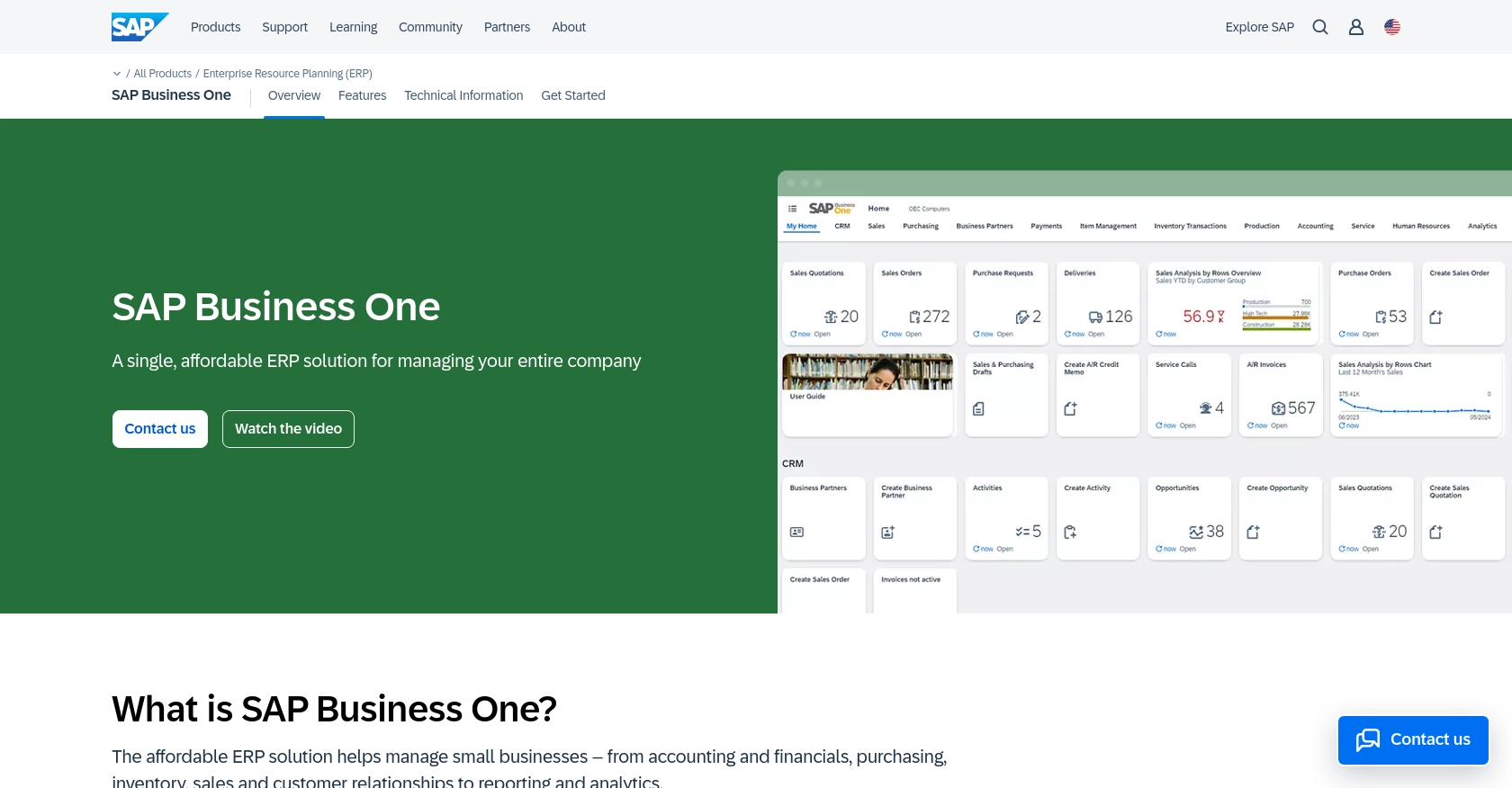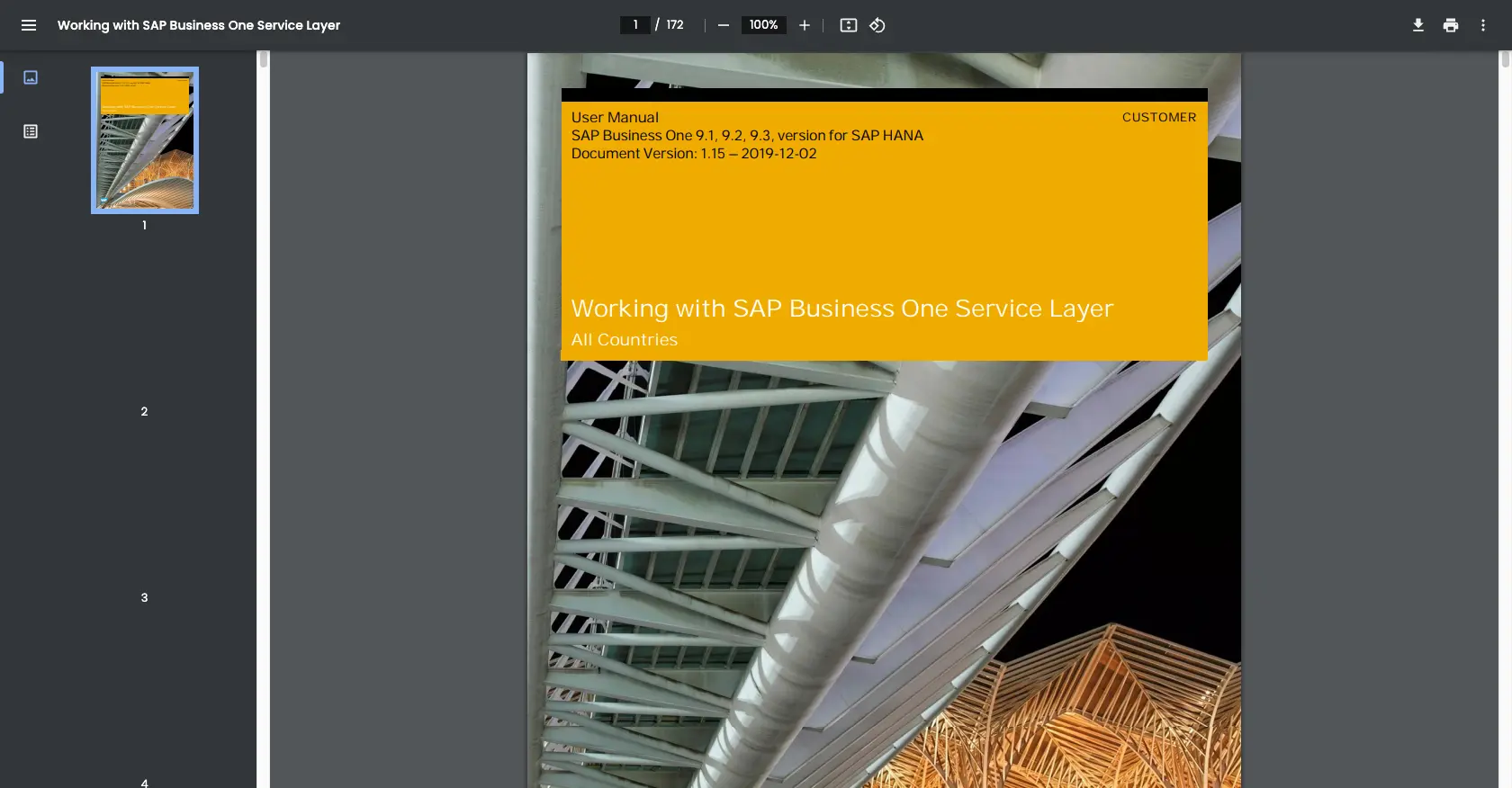Using the Sap Business One API to Create or Update Orders (with PHP examples)

Introduction to SAP Business One API
SAP Business One is a comprehensive enterprise resource planning (ERP) solution designed for small to medium-sized businesses. It offers a wide range of functionalities, including financial management, sales, customer relationship management, and supply chain operations, all within a single platform.
Integrating with the SAP Business One API allows developers to enhance business processes by automating tasks such as creating or updating orders. For example, a developer could use the API to automatically update order statuses in real-time as they are processed, ensuring that inventory levels and customer information are always up-to-date.
Setting Up a Test or Sandbox Account for SAP Business One API Integration
Before you can begin integrating with the SAP Business One API, it's essential to set up a test or sandbox account. This environment allows developers to safely experiment with API calls without affecting live data, ensuring that any changes or updates can be thoroughly tested before deployment.
Creating a SAP Business One Sandbox Account
To get started, you need access to a SAP Business One sandbox environment. If your organization already uses SAP Business One, you may request access to a sandbox instance from your system administrator. If not, you can contact SAP or an authorized SAP partner to inquire about trial or demo access.
Setting Up OAuth-Based Authentication for SAP Business One API
The SAP Business One API uses a custom authentication method. Follow these steps to set up authentication:
- Log in to your SAP Business One sandbox account.
- Navigate to the Service Layer section, which is the API management interface.
- Create a new application by providing necessary details such as application name and description.
- Once the application is created, you will receive a Client ID and Client Secret. Keep these credentials secure as they are required for API authentication.
Generating API Keys for SAP Business One
If your integration requires API key-based access, follow these steps:
- Within the Service Layer, locate the API key management section.
- Generate a new API key by clicking on the Create API Key button.
- Copy the generated API key and store it securely. This key will be used to authenticate your API requests.
For more detailed information on authentication, refer to the official SAP documentation: SAP Business One Service Layer Documentation.

sbb-itb-96038d7
Making API Calls to SAP Business One for Order Management Using PHP
To interact with the SAP Business One API for creating or updating orders, you'll need to use PHP to make HTTP requests. This section will guide you through the process, including setting up your environment, writing the code, and handling responses.
Setting Up Your PHP Environment for SAP Business One API Integration
Before making API calls, ensure you have the following prerequisites installed on your machine:
- PHP 7.4 or higher
- Composer for dependency management
Install the Guzzle HTTP client, which simplifies making HTTP requests in PHP, by running the following command:
composer require guzzlehttp/guzzleCreating or Updating Orders with SAP Business One API Using PHP
Below is an example of how to create or update orders using the SAP Business One API with PHP:
require 'vendor/autoload.php';
use GuzzleHttp\Client;
// Initialize the Guzzle client
$client = new Client([
'base_uri' => 'https://your-sap-business-one-instance.com/b1s/v1/',
'headers' => [
'Content-Type' => 'application/json',
'Authorization' => 'Bearer Your_Access_Token'
]
]);
// Define the order data
$orderData = [
'CardCode' => 'C20000',
'DocDueDate' => '2023-10-15',
'DocumentLines' => [
[
'ItemCode' => 'A00001',
'Quantity' => 10,
'Price' => 100
]
]
];
// Make the API request to create or update an order
$response = $client->post('Orders', [
'json' => $orderData
]);
// Check the response status
if ($response->getStatusCode() == 201) {
echo "Order created or updated successfully.";
} else {
echo "Failed to create or update order.";
}
Replace Your_Access_Token with the token obtained during authentication. This script initializes a Guzzle client, sets up the necessary headers, and sends a POST request to the SAP Business One API to create or update an order.
Verifying API Call Success and Handling Errors in SAP Business One
After executing the API call, you can verify the success by checking the response status code. A status code of 201 indicates success. If the request fails, handle errors by checking the response body for error messages.
For more detailed error handling, refer to the official SAP documentation: SAP Business One API Reference.
Best Practices for SAP Business One API Integration
When integrating with the SAP Business One API, it's crucial to follow best practices to ensure a secure and efficient implementation. Here are some recommendations:
- Securely Store Credentials: Always store your API credentials, such as the Client ID, Client Secret, and API keys, securely. Consider using environment variables or secure vaults to manage sensitive information.
- Handle Rate Limiting: Be mindful of the API rate limits to avoid throttling. Implement exponential backoff strategies to handle retries gracefully. Check the SAP documentation for specific rate limit details.
- Data Transformation and Standardization: Ensure that data fields are transformed and standardized according to your business logic before sending or after receiving data from the API. This helps maintain data consistency across systems.
- Error Handling: Implement robust error handling to capture and log API errors. Use the error messages and codes provided by the API to troubleshoot and resolve issues efficiently.
Streamlining Integrations with Endgrate
Integrating with multiple platforms can be complex and time-consuming. Endgrate simplifies this process by offering a unified API endpoint that connects to various platforms, including SAP Business One. By using Endgrate, you can:
- Save Time and Resources: Focus on your core product development while outsourcing integrations to Endgrate.
- Build Once, Deploy Everywhere: Create a single integration for each use case and apply it across different platforms.
- Enhance Customer Experience: Provide an intuitive and seamless integration experience for your users.
Explore how Endgrate can transform your integration strategy by visiting Endgrate today.
Read More
Ready to get started?
